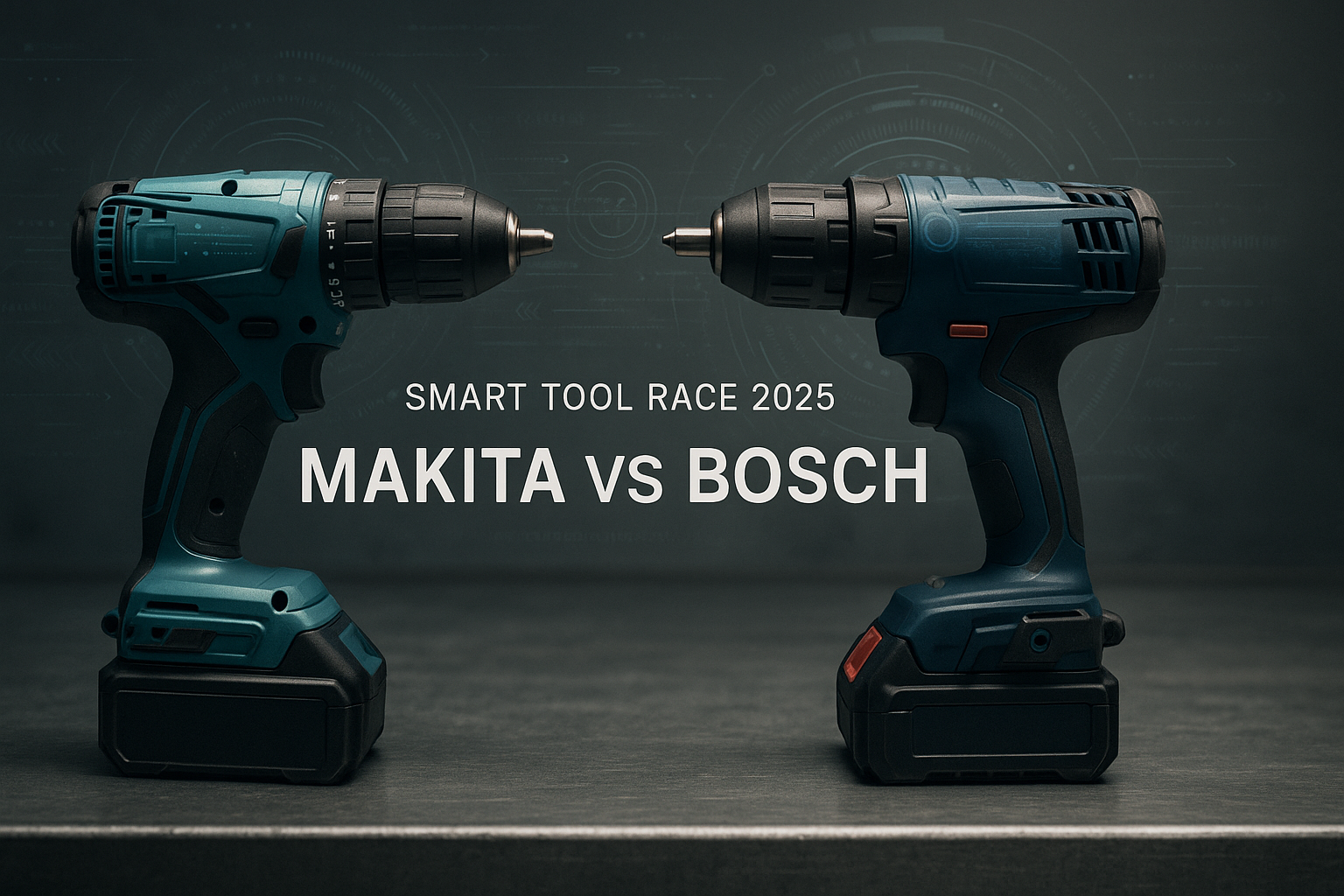Both Makita and Bosch have built decades of trust among professionals and DIY users. But in 2025, the competition between these two powerhouses has shifted. The focus is no longer just on torque, speed, or durability — it’s about smart technology, connectivity, and energy efficiency.
This year marks a new chapter in the power tool industry — one where the winner isn’t the strongest, but the most intelligent.
A New Era of Smart Tools
The modern workshop is no longer powered only by electricity — it runs on data.
Bosch and Makita are both investing heavily in IoT-integrated systems that redefine how users interact with their tools.
Bosch’s ToolBox App connects drills, saws, and drivers through Bluetooth, allowing real-time adjustment of speed, torque, and diagnostics. This mirrors the concept of connected systems explored in Inside the Smart Workshop: Connected Tools That Think for You, where tools communicate, learn, and adapt.
Makita, meanwhile, is advancing its AWS (Auto-Start Wireless System), syncing power tools and dust extractors seamlessly. It’s an efficiency model similar to the automated systems discussed in Workshop of the Future: How AI + IoT Will Automate Your Tool Bench — smooth, silent, and self-regulated.
Both brands are pushing boundaries, but in very different ways. Bosch leads in connectivity and data insight, while Makita stands out in workflow integration and jobsite practicality.
Battery Technology: Power Meets Endurance
Cordless innovation continues to define the 2025 market.
Bosch’s CORE18V system uses advanced cell design and cooling channels to sustain higher current without overheating — a direct reflection of the breakthroughs described in How Tabless Battery Technology Is Changing Power Tools Forever.
Makita, on the other hand, relies on its XGT platform, a system designed for cross-compatibility and higher voltage output. Its strength lies in stability under heavy load and in providing consistent torque, making it ideal for industrial users and heavy-duty tasks.
In terms of battery life, Bosch still dominates the precision sector, while Makita continues to serve endurance-driven professionals who value adaptability and runtime.
Durability and Design Philosophy
Bosch tools often emphasize digital control and high-end engineering. Their designs incorporate smart sensors that detect load changes and adjust output automatically.
Makita, in contrast, maintains a focus on mechanical simplicity — fewer electronics, more rugged build. This makes Makita’s lineup especially favored in outdoor and construction environments where reliability outweighs connectivity.
This contrast reflects a broader division in the industry: digital optimization versus manual resilience. Both brands excel, but cater to different mindsets of the modern craftsman.
The Sustainability Factor
Tool manufacturing is also being shaped by environmental responsibility.
Bosch has made clear progress toward carbon-neutral production, using recycled materials in casings and packaging. Makita follows a slower but steady approach, focusing on product longevity and repairability — an ethos consistent with the philosophy explored in Repair, Don’t Replace: The New Ethics of Modern Craftsmanship.
Both strategies lead to the same outcome: less waste, longer tool life, and a smaller environmental footprint.
Which Brand Wins the Race?
There’s no single answer. Bosch dominates when it comes to smart analytics, battery intelligence, and connectivity. Makita, meanwhile, remains unmatched in mechanical resilience, cross-tool compatibility, and field-tested endurance.
In essence, Bosch is building the connected workshop, while Makita is perfecting the reliable one.
The real winner depends on how you define progress: digital intelligence or traditional performance.
